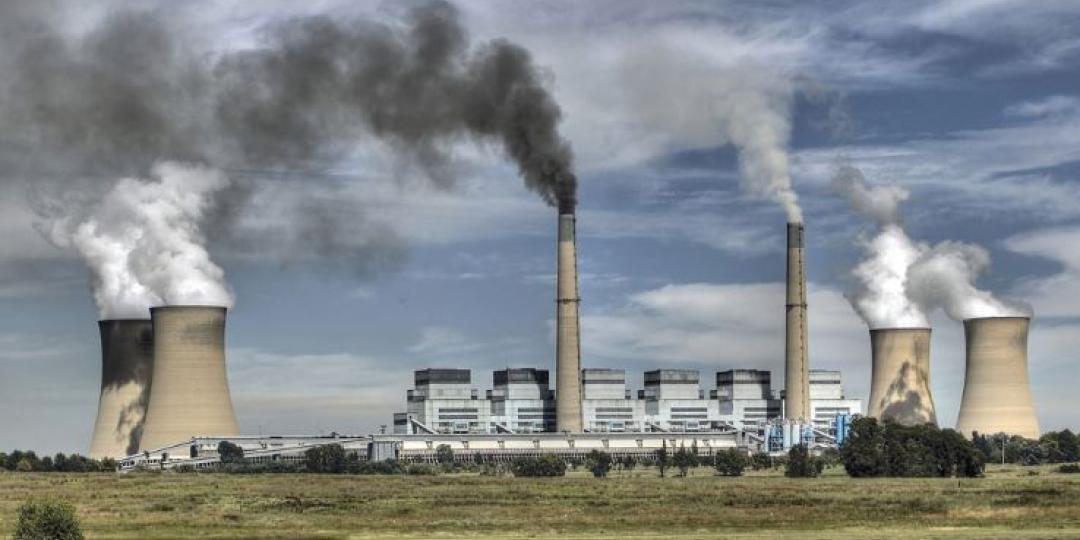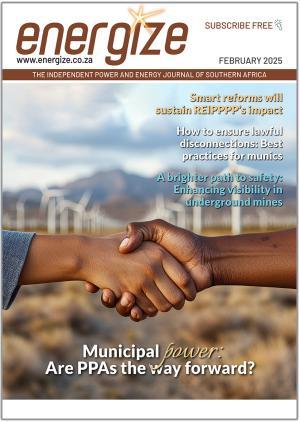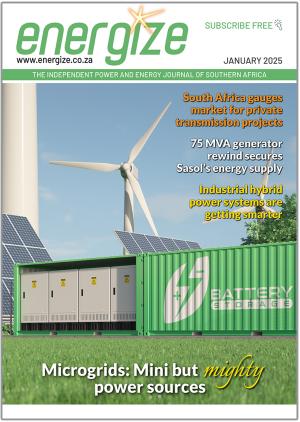Old, decommissioned coal-fired power stations in Mpumalanga can be converted to clean power generators, André de Ruyter, Eskom’s CEO says. This would benefit the local community by addressing poor air quality issues and making the existing transmission network available to independent power producers.
He said this in his keynote address at the launch of a new documentary, Voices from under a dark cloud: Towards a Just Transition in the coalfields of South Africa. Through interviews with affected people and interested organisations, this 30-minute video discusses the challenges and opportunities associated with the ending of the use of coal for power generation in the province.
The documentary was produced by the Trade & Industrial Policy Strategies (TIPS), the National Labour and Economic Development Institute, groundWork and Peta Wolpe, the managing director of Sustainability Energy Africa. The documentary was directed by Joelle Chesselet.

In his address, De Ruyter said that Eskom will start retiring some of its ageing coal-fired power stations soon. The 1000 MW Komati power station will be the first to close in September this year.
Overall, 22 GW will be decommissioned by 2035. This will be achieved in two tranches of 11 GW each, with the first 11 GW shutting down in 2030. De Ruyter said that by retiring almost half of the power utility’s fleet of coal-fired power stations, Eskom would reduce its CO2 emissions by about 62%.
He added that an additional 50 or 60 GW of new generation capacity will be needed to drive the economy in the coming decades. Furthermore, an additional 8000 km of transmission lines will be needed. He estimates that the electricity supply industry will need to invest an extra R1,2-trillion by 2035.
Regarding the transition to renewable energy, de Ruyter said that although the best wind and solar resources are found far from Mpumalanga, there is a limit to what the transmission system can carry there. The cheapest and quickest way to make renewable energy available to the grid is to connect it where the transmission system is already fed from.
Therefore, it makes sense, de Ruyter said, to use the existing grid for new wind and solar PV installations which are to be built at old power station sites in Mpumalanga when they are shut down. Eskom wants to do this at Komati which is to be decommissioned at the end of September.
Komati Power Station transition project
Eskom is planning a repowering and repurposing programme at the Komati Power Station. The idea is to have 100 MW of solar PV and 70 MW of wind power installed at the site and to connect that to a mini-grid which would connect into the existing transmission infrastructure. This would achieve two things, Eskom says. Firstly, it would make the site reusable as a power generating facility, and secondly, it would enable the people who work there to continue earning an income.
De Ruyter said that since the area around the Komati power station is populated by people whose income is either directly or indirectly dependent on this power station, Eskom’s initiative would help to enable a just energy transition. Local people can be trained and employed to work with renewable energy systems, de Ruyter said.
To achieve this goal, the power utility is establishing a training centre in cooperation with the Cape Peninsula University of Technology’s Renewable Energy Technology Centre.
Eskom is also setting up a micro-grid manufacturing facility which converts old shipping containers into portable solar PV power plants. These can be used to provide power to people living in remote areas without grid access. These could also be used at remote schools and clinics. Entrepreneurs who would be interested in such a manufacturing project would receive technical assistance from Eskom.
International support
The launch of this documentary coincides with a visit to South Africa by the United Nations Conference of Parties (COP) 26 President, Alok Sharma. During Sharma’s week-long visit, he will hold meetings with government ministers, communities and business leaders to discuss the country's just energy transition. These discussions are intended to strengthen the Just Energy Transition Partnership which was announced at COP26 in November last year. At that meeting, a number of western countries pledged US$8,5-billion to assist South Africa in the decarbonisation of its economy. He also visited the Komati power station and met with coal miners and community leaders.
Government support
President Ramaphosa says that South Africa must transition away from coal for electricity generation. The country, as a signatory to the Paris Accord, commits it to reduce the increase in its atmospheric temperature to 1,5 degrees Celsius above what it was prior to the industrialisation of the country.
Satellite data reveals the world’s largest air pollution hotspot is Mpumalanga. Why is this? According to international research, it’s because the province is home to 12 of Eskom’s oldest, dirtiest coal-fired power stations and the mines which supply these power stations with the coal they burn.
But South Africans have the right to breathe clean, unpolluted air. Even those who live in Mpumalanga. For this reason, more and more residents of the province are calling on Government to action the just energy transition so that they can enjoy clean air and water.
“The land is the life in the soil, there’s no life without clean water, without clean air” – Matthews Hlabane, the national organiser of the South African Green Revolutionary Council.
The government’s integrated resource plan – the “roadmap” to South Africa’s future electricity supply – includes 1700 MW from new coal-fired power stations between now and 2024. The minister of mineral affairs and energy has been quoted as saying that the new coal-fired plants will use “clean coal” to produce electricity.
While some believe the rhetoric, the truth is that there is no such thing as clean coal. The best one could hope for is for the new plants to be fitted with sophisticated pollution mitigating equipment such as flue gas desulphurisation (FGD), particulate precipitation (PP) and some kind of carbon capture and usage system (CCUS).
According to Eskom, adding just FGD – not PP or CCUS – to Kusile (its newest power plant which is now two-thirds complete) would cost almost R40-billion over and above the R160-billion the power station is projected to cost once all six units are finally online. This installation would address the majority of the deadly sulphur emissions but would do nothing in terms of reducing the number of life-threatening particulates which are being spewed into the air day and night. Nor would it help to reduce the levels of CO2 in the air. Since the people of Mpumalanga are clamouring for clean air, it seems that the R40-billion should rather be spent on building new clean electricity generating plant using renewable energy resources. This, of course, is what Eskom is offering at the Komati power station.
President Ramaphosa says that government’s responsibility is to create an environment where the private sector can invest and unleash the dynamism of our economy. He stresses that it must however be an environment in which South Africans can “live a better life and unleash the energy of their capabilities – no one must be left behind”.
But according to those interviewed in the documentary, Government messages are confusing because the minister of energy seems to contradict the president regarding the transition from coal to renewables. Mining licences are still being issued, the commentators say.
Mpumalanga leading the way
The Mpumalanga province is developing a just transition framework, the first in the country. The province has a “Green Cluster Agency” which is working to coordinate activities around the “green economy” in the province. It is working with academia, industry and government to develop a unified approach to rehabilitate land and water for agriculture, and wetlands which will draw birds and animals, and which in turn could stimulate a tourism industry in the area.
Dr Titus Mathe, GM, Group Technology, Eskom says that what will happen at Komati will be repeated at “Hendrina and all the other stations which are earmarked to be shut down”. In other words, this is the beginning of a process.
It’s encouraging to see how Mpumalanga has taken the initiative to address its pollution problem. Let’s hope this initiative leads to the start of a just energy transition in South Africa.















